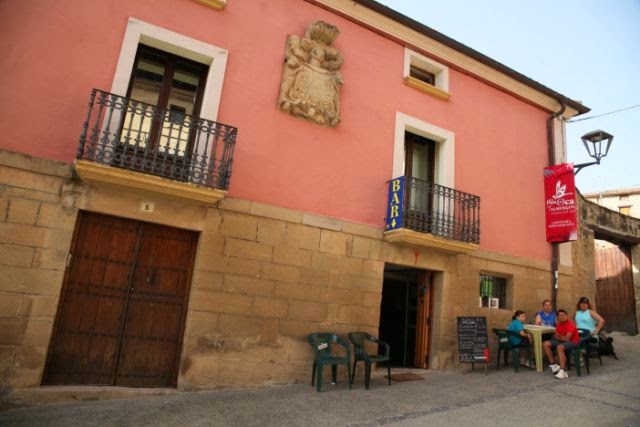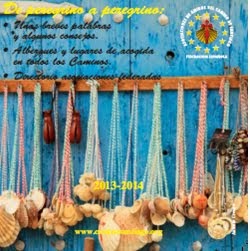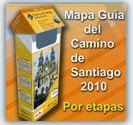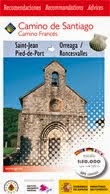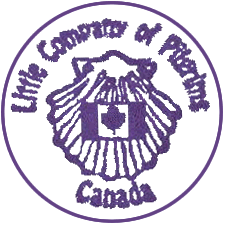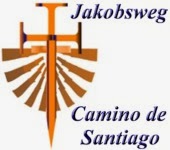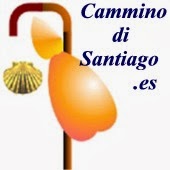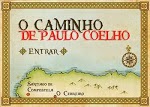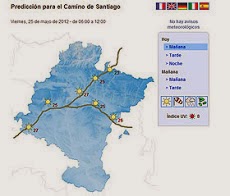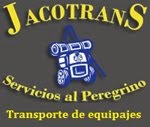Shelters
Publicado por Unknown , 4:03
Shelters
If there is anything that identifies the Camino de Santiago and makes it unlike any other route it is the hiker's world of exclusive network of shelters for pilgrims. This is a legacy of that tradition of hospitality which allowed medieval travelers to get around the world. Only those pilgrims on foot, bicycle or horse who hold the credential of a pilgrim (a kind of passport issued by churches, associations and even their own shelters) allowing them to sleep in these shelters. Authenticated by the owners of the shelter they avoid being overun by sneak vacationers in search of cheaper accommodation.
Like the sign put up by a priest (in Grañon) which says "Pilgrim, give what you can, take what you need" - these are now just a nostalgic memory. Typically, shelters now vask for a fixed price (three to five euros) except a few honorable cases, such as shelters run by the Federation of Friends of the Camino de Santiago, who remain faithful to the donation system.
Private shelters
Given the massive influx of pilgrims and the shortage of places in these public shelters a new class of establishment has emerged - the private hostel. They are pseudo-shelters with services for the walker, gradually being regulated by law, which offer accommodation in bunk beds, heating, hot water and various services at a fixed price, which typically ranges between seven and ten euros. Most offer the same spirit of welcome to the piglrims, in areas where there was none before, and are good value for money. An example of a good private hostel in The camino could be "La pata de oca" in Torres del Río.

Camino de Santiago Links
Publicado por Unknown , 3:56

a
![]() Yahoo.com - Camino de Santiago Group
Yahoo.com - Camino de Santiago Group
A recommended Camino listserv (Spanish)![]() MSN.com - ElCaminoSantiago Group
MSN.com - ElCaminoSantiago Group
A recommended Camino listserv (English)![]() CaminoSantiago.com - Pilgrim Forum
CaminoSantiago.com - Pilgrim Forum
Good forum for Camino Q&A (English)![]() CSJ.org.uk - The Confraternity of Saint James
CSJ.org.uk - The Confraternity of Saint James
Excellent resources for the Caminos to Santiago (English)![]() StJamesIrl.com - Irish Friends of Saint James
StJamesIrl.com - Irish Friends of Saint James
The Irish Society of the Friends of Saint James (English)![]() AmericanPilgrims.com
AmericanPilgrims.com
American Pilgrims on the Camino (English)
To be a Pilgrim
Publicado por Unknown , 3:54
Vídeos
Publicado por Unknown , 3:46
 Oloron-Sainte-Marie
Oloron-Sainte-Marie Aulnay de Saintonge
Aulnay de Saintonge Moissac
Moissac Undués de Lerda
Undués de Lerda Santo Domingo de Silos
Santo Domingo de Silos
Quemaduras en la piel
Publicado por Unknown , 3:45
Cómo prevenirlas
Utilizar una vestimenta adecuada y cremas solares del máximo factor de protección ( FPS 60 ), dado que la media de exposición solar durante la marcha es de 3 ó 4 horas diarias. Es importante aplicar la crema solar al menos 20 minutos antes de la exposición al sol y repetir las aplicaciones cada cierto tiempo, dependiendo del factor de protección elegido. Es aconsejable que la crema de protección solar sea resistente al sudor.Qué hacer
Una toalla limpia, húmeda y fría reduce el dolor del área afectada. Se debe cubrir la quemadura con un vendaje estéril y se debe proteger de presiones o fricciones.Peregrinos ilustres
Publicado por Unknown , 3:43
Peregrinos ilustres
Publicado por Unknown , jueves, 13 de noviembre de 2014 3:29
Fernando Quiroga Palacios
Fue Cardenal-Arzobispo de Santiago de Compostela entre 1952 y 1971. En 1949 fue designado Arzobispo de Santiago de Compostela donde, en 1952, fue elevado a la sagrada púrpura como Cardenal-Presbítero con el "título" de San Agustín.
Consejos
Publicado por Unknown , 3:25
Antes de dormir recomiendo tomar una pastilla de aspirina para aliviar los dolores musculares. Además también deberemos preparar el material para tenerlo todo a mano al levantarse por la mañana:
- Las chanclas
- La bolsa de aseo
- La crema solar, para el dolor muscular y la vaselina para los pies
- Dejar fuera la ropa que se usará a la mañana siguiente
- Airear las botas. Es bueno introducir en ellas papel de periódico para absorber la humedad
Camino: Guidebooks
Publicado por Unknown , 3:21
![]() The Way of Saint James: The Pyrenees to Santiago
The Way of Saint James: The Pyrenees to Santiago
by Alison Raju (Paperback)![]() The Way of Saint James: Via de la Plata, Sevilla to Santiago
The Way of Saint James: Via de la Plata, Sevilla to Santiago
by Alison Raju (Paperback)![]() A Practical Guide for Pilgrims: The Road to Santiago
A Practical Guide for Pilgrims: The Road to Santiago
by Millán Bravo Lozano (Paperback)![]() Guía Práctica del Peregrino: El Camino de Santiago
Guía Práctica del Peregrino: El Camino de Santiago
by Millán Bravo Lozano (Paperback)![]() Spanien: Jakobsweg Camino Frances - Der Weg ist das Ziel
Spanien: Jakobsweg Camino Frances - Der Weg ist das Ziel
by Michael Kasper & Michael Moll (Paperback)
El Camino Santiago or the Way of St James
Publicado por Unknown , 3:17




